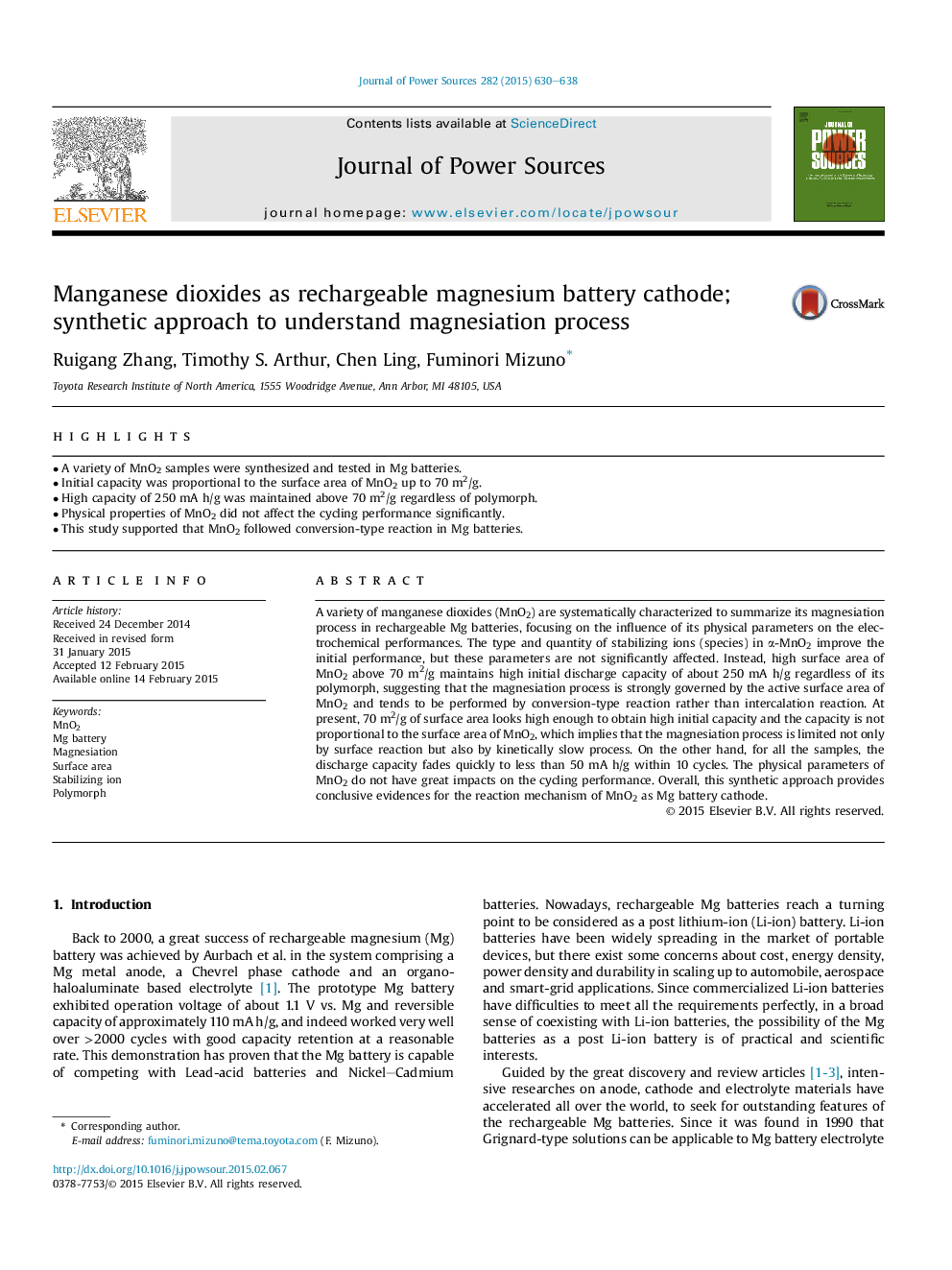| Article ID | Journal | Published Year | Pages | File Type |
|---|---|---|---|---|
| 7733377 | Journal of Power Sources | 2015 | 9 Pages |
Abstract
A variety of manganese dioxides (MnO2) are systematically characterized to summarize its magnesiation process in rechargeable Mg batteries, focusing on the influence of its physical parameters on the electrochemical performances. The type and quantity of stabilizing ions (species) in α-MnO2 improve the initial performance, but these parameters are not significantly affected. Instead, high surface area of MnO2 above 70 m2/g maintains high initial discharge capacity of about 250 mA h/g regardless of its polymorph, suggesting that the magnesiation process is strongly governed by the active surface area of MnO2 and tends to be performed by conversion-type reaction rather than intercalation reaction. At present, 70 m2/g of surface area looks high enough to obtain high initial capacity and the capacity is not proportional to the surface area of MnO2, which implies that the magnesiation process is limited not only by surface reaction but also by kinetically slow process. On the other hand, for all the samples, the discharge capacity fades quickly to less than 50 mA h/g within 10 cycles. The physical parameters of MnO2 do not have great impacts on the cycling performance. Overall, this synthetic approach provides conclusive evidences for the reaction mechanism of MnO2 as Mg battery cathode.
Keywords
Related Topics
Physical Sciences and Engineering
Chemistry
Electrochemistry
Authors
Ruigang Zhang, Timothy S. Arthur, Chen Ling, Fuminori Mizuno,
